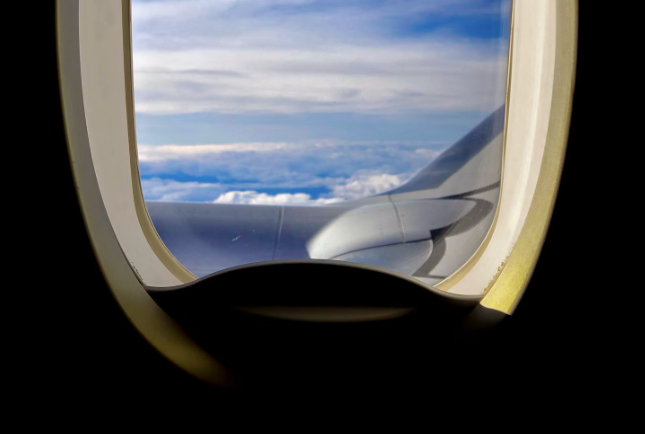Better Things to Talk About.

January 8, 2024
POOR ALASKA Airlines. There they were, leisurely mulling the finer points of their merger with Hawaiian, wondering which visage to paint on the tail, when the 737 MAX-9 stole the show.
Pop went a fuselage plug on flight 1282, decompressing the jet and scaring the daylights out of everyone on board. The plane landed safely, but now a number of MAXes are grounded as regulators focus on attachment bolts.
The MAX can’t catch a break, either. This is the plane that spent two years on hiatus after the crashes of Lion Air flight 510 and Ethiopian Airlines flight 302, until its twice deadly stall-avoidance system was redesigned.
It looks bad, I know. Particularly for Boeing. But this is likely a lot more minor than the media spin suggests. I expect the plug attachments will get some sort of do-over and the planes will quickly be up and flying again.
A jetliner is pressurized so that its occupants can breathe without the need for supplemental oxygen. If the fuselage is breached, that squeezed-together air rushes out. The pilots will don oxygen masks and take the plane to a lower altitude in what we call, plainly enough, an “emergency descent.” The sensations of this drop might be alarming, but it’s an easy and straightforward maneuver.

Rarely are decompressions deadly. When they are, it’s usually because it happens explosively, such as when a bomb goes off, causing massive structural damage. In the Alaska incident, the big danger would’ve been the door plug colliding with the tail structure. But this didn’t happen, leaving the rest of it pretty routine.
I don’t mean to sound blithe, but it’s amusing how much attention this mishap is getting. One of the biggest news stories of the week is about a decompression in which nobody was killed or injured. The track record of the MAX, I figure, is part of the reason. A negligible malfunction, or a design flaw suggesting negligence? Let’s hope it’s not the latter, but either way, back in the Golden Age of Air Disasters, something like this would barely have made the papers.
Ironically, the amount of coverage we’re seeing serves to remind us of just how safe flying has become. In decades past, multiple airline crashes were the norm every year, with hundreds dead at a time. We’ve grown so accustomed to near-perfect safety that a minor event, without a single injury, wins as much attention in 2024 as a crash that killed two-hundred people would’ve gotten in the 1980s.
On the other hand, it’s better to be reading about a decompression than about a catastrophe. And it hardly needs saying that this could easily have been more serious. Had a passenger been sitting adjacent to that plug and not wearing a seatbelt, he or she would’ve been ejected. A hole opening up in the side of a plane, regardless of the reason, earns more than a shrug. Even more so if the problem is traced to a design defect or a quality control screw-up. People are skeptical, and let’s be honest, both Boeing and the 737 MAX deserve whatever scrutiny they’re getting.
I guess that’s the real, if obvious issue: It’s less about what happened than what could have happened. And will it happen again?
Incidents like this, and our focus on them, keep us on our toes. I get that. It’s a way of being proactive and careful, so that we maintain the levels of safety we’ve achieved.

UPDATES:
Some of you have wondered why section of the Alaska 737 that blew out was shaped like a door. The number of required doors depends on seating configuration. Alaska’s layout doesn’t mandate a door in this spot, so there’s a plug there instead, attached with bolts.
Meanwhile, a news outlet today asked me why, following the decompression, no announcement was made by the captain. It’s hard to know, but I imagine the cockpit crew was quite busy. There was an emergency descent to perform, as well as the necessary checklists, coordination with air traffic control, etc. Also the pilots would’ve been wearing oxygen masks, which makes communications more difficult.
It’s possible one of the pilots did make a PA but it wasn’t heard in the noise. Or, being as busy as I imagine they were, they may have relayed information to the flight attendants and left it up to them.
As a pilot I’ve experienced a handful of depressurizations over the years. One afternoon I was working a flight from South America to the United States when, high over the Caribbean, came a sudden whooshing sound that seemed to emanate from nowhere and everywhere at once. I could feel my ears popping, and sure enough, a glance at the instruments showed we were quickly losing pressurization. The captain and I put our masks on, took out the book and began troubleshooting.
Part of that troubleshooting involved one of those steep descents. To the passengers I’m sure it
felt like a roller coaster, but everything was carefully coordinated. The autopilot was engaged the whole time, and no limits were exceeded.
Should a pressure loss occur over mountains or other high terrain, pilots will follow predetermined routes, sometimes called “escape routes,” that allow for a more gradual descent, in stages. Even if crossing the Andes or the Himalayas, there’s always the opportunity to reach a safe altitude before supplemental oxygen runs out.
Related Stories:
MARRIAGE MINDED: THE ALASKA-HAWAIIAN MERGER.
THE MAX IS BACK
THE AIRPLANE THAT ISN’T
Photos courtesy of Michael Saporito and Unsplash.



